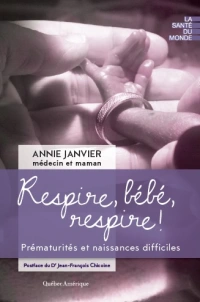The scientific basis of neonatology is vitally important to me, the enormous advances that we have made have all been founded on basic and clinical science. So I can get quite agitated when I see articles reporting trials of interventions for which there is no rational scientific basis, especially when they are published in reputable journals. This study for example in the Archives of Disease in Childhood, investigated whether osteopathic manipulation would improve the frequency of exclusive breast feeding. (It didn’t) If you don’t know much about osteopathy, maybe that would sound reasonable, but osteopathic manipulation is a practice with no scientific basis.
Osteopathy was invented in the 1870s by a charlatan called Andrew Still, who pretended to have medical training, and came up with vague beliefs that all human illness could be treated by manipulation adjusting the nerves and muscles. He reported his own forays into treating children, including a comment in his biography that he could “shake a child and stop scarlet fever, croup, diphtheria, and cure whooping cough in three days by a wring of its neck”. The scientific underpinnings of osteopathy have not advanced since then.
One could ask, for a study such as the one I opened the post with, if performing a negative study is a good thing, as it might convince people not to have their babies manipulated. Perhaps well-performed studies in countries where a lot of people already use osteopathic practitioners might be a good way to guide people away from them. I think that is extremely unlikely to be effective, despite the complete lack of a scientific basis for the practice, many people consult osteopaths, and I think recent experience has shown that regardless of how ridiculous the quackery you can find people defending it with very loud, effective pulpits on social media. I think, in contrast, performing such studies gives a veneer of scientific credibility that is unjustified, it is better to say from the start, that osteopathy is a practice based on the pre-scientific notions of a 19th century charlatan, and it should not be given any credibility.
If you want to see how ridiculous this continues to be, watch a few youtube videos from proponents of osteopathy. Apparently osteopaths are able, by touching a baby, to determine if there are abnormalities of CSF circulation, (there always are) and fix the circulation by laying their hands in various positions and by pressure or traction create permanent readjustments. They seem to be heavily into craniosacral pulsations, which apparently have a frequency of between 6 and 14 per minute, and are imaginary, of course, but any osteopath able to pay their consulting room rent will reliably find abnormalities of the craniosacral mechanism and fix them with manipulation.
It was very easy to find promotional videos which show how an osteopath would manipulate a baby’s skull to adjust the parietals and occipitals (they tend to know a lot of anatomy words) to cure colic, one of them used a pleasant circular rocking technique, which looks like it would make the baby temporarily calmer, but create permanent physiologic changes, I doubt it.
A quick word about D.O. training in the USA, which is quite different to what osteopaths learn in the rest of the world. In general in the USA D.O. trained physicians go to accredited schools, with the same accreditation as for M.D. training, and they have licences and scope of practice identical to MDs. Their training is just about identical also, with maybe some extra emphasis on the muskuloskeletal system, but that is not what we see in Europe, or Canada, where osteopathy practitioners have no relevant medical training.
Unfortunately the Journal of Osteopathic Medicine has its own youtube channel, with instructive videos about, for example, how the Galbreath technique of skull manipulation is supposed to permanently adjust the drainage of the Eustachian tubes and treat otitis media. Otitis media is over-diagnosed and over-treated with antibiotics, probably, anyway, so perhaps a bit of placebo manipulation might not be a bad thing! (That is a light-hearted comment, evidence-based otitis media evaluation and treatment is important). But when we come to infants, being treated for real problems where effective therapies exist, using ineffective manipulations or treating imaginary problems will not improve their health.
This amazing example (Osteopathic manipulation improves cerebro-spanchnic oxygenation in late preterm infants) was published in the journal “Molecules” which is a journal from MDPI, previously listed as publishers of predatory journals in Beales’ list: in this study the authors placed cerebral and splanchnic NIRS sensors on 7 day old late preterm infants, then performed manipulations while watching the NIRS signal. Regional splanchnic saturation decreased and calculated oxygen extraction increased while they messed about with the babies. They interpreted this as a good thing! Will you tell them or shall I? I think they should ask for a refund of the 2,300 Swiss francs they seem to have paid to get it published.
But it can get worrying, a prospective trial of osteopathic manipulation in asphyxiated babies post cooling was performed, in a hospital in the USA, one of the authors is from the hospitals “manipulation service”. Each of the 12 carefully selected enrolled babies was compared to 3 historical controls; even with this piss-poor study design they were unable to show any effect on length of stay, which was their outcome. But, low and behold, they did show that “by the final treatment, the craniosacral mechanism’s intraosseous and cranial base compressions and physiologic motion were improved”, so that’s good.
The authors also claimed that although there was no statistically significant difference in length of stay (9.1 days vs 10.1 days) it might be “clinically significant”. Fortunately this drivel was published in a journal called ‘the Journal of Osteopathic Medicine” so probably no-one will take any notice of it. How is it possible, that these authors, 2 of whom seem to have appointments at Tuft’s, can really believe that by touching a baby they can determine the intraosseus craniosacral mechanism, and its physiologic motion? It must take a special kind of self deception to swallow this stuff.
A “scoping review” of osteopathy (Osteopathic Manipulative Medicine, OMM) in paediatrics was published in the journal “Pediatrics” last year. They were unable to find any reliable evidence that OMM is of any value. The review concluded that:
“There is little strong, scientific, evidence-based literature demonstrating the therapeutic benefit of OMM for pediatric care. No strong clinical recommendations can be made, but it can be medically tolerated given its low risk profile. High-quality, scientifically rigorous OMM research is required to evaluate safety, feasibility, and efficacy in pediatrics.”
No, no, no. The first sentence is a bit weak, but truthful. The second sentence should be “There is no rational scientific basis for any of the claims of OMM”, and the third “It would be a waste of resources and an abrogation of our duty of care to families to perform more research of OMM”. If future research can find a hint of a scientific justification for osteopathy, then prospective randomized trials could, theoretically, be designed which should be carefully masked and use sham manipulations in controls. But the science should come first, which is currently lacking, craniosacral pulsations anyone?









This entire article had me laughing out loud- literally. Thank you for making my morning!